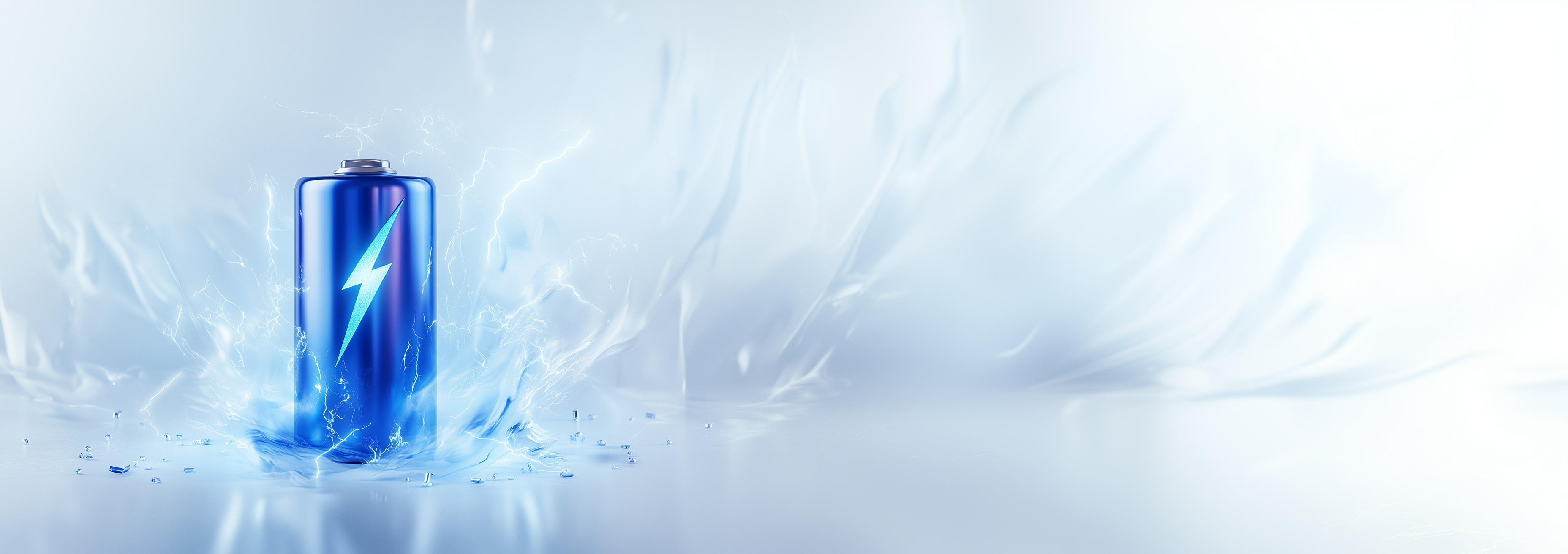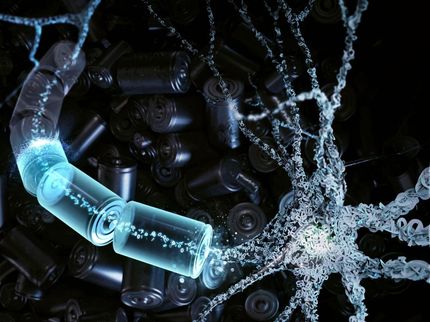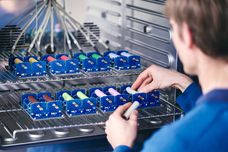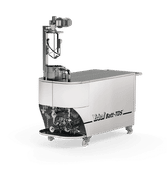Novel manufacturing process for high-performance lithium-metal battery
Towards a sustainable and competitive battery value chain in Europe
The Horizon 2020 SOLiDIFY consortium, comprised of 14 European partners, has developed a high-performance lithium-metal solid-state battery. The prototype battery, manufactured in a state-of-the-art battery lab at EnergyVille, Belgium, features a unique "liquid-to-solid" processed electrolyte, jointly developed by imec, Empa and SOLVIONIC. The battery boasts an impressive energy density of 1070 Wh/L, well above the 800 Wh/L for current lithium-ion batteries. The manufacturing process, which is both cost-effective and adaptable to existing lithium-ion battery production lines, paves the way for commercially viable solid-state lithium-metal batteries for electromobility.
The push towards reducing CO2 emissions and combating climate change has led to a surge in electric vehicle (EV) adoption. However, the drive for extended range and faster charging times highlights the ongoing need for high-performance batteries. At the same time, it is crucial to ensure these batteries are cost-effective, as they currently account for nearly half the price of an EV. Thus, the materials used in these batteries play a key role in determining both their performance and affordability.
Enter solid-state batteries. These batteries use a solid electrolyte material through which ions flow during charge and discharge, instead of the liquid electrolyte used in conventional lithium-ion batteries. This offers potential benefits such as higher energy density and reduced susceptibility to fires. At the material level, the higher energy density of the cell results from the introduction of a thin lithium-metal anode together with a sufficiently thin solid electrolyte separator. However, developing a cost-effective architecture for their mass production has remained elusive.
Now, within the SOLiDIFY project, the consortium has created a prototype of a high-performance solid-state lithium-metal battery. The pouch cell, manufactured in the state-of-the-art battery lab of EnergyVille in Genk/Belgium, achieved a high energy density of 1070 Wh/L, compared to the 800 Wh/L for today's lithium-ion battery technologies. The high energy density was achieved by combining a thick, high-energy-density cathode (NMC, containing nickel, manganese, and cobalt) separated from a thin lithium-metal anode by a thin solid electrolyte separator. Importantly, with a manufacturing process that is manageable at room temperature, adaptable to current lithium-ion battery production lines and projected to cost less than €150 per kWh, this process holds promise for affordable industrial transfer.
This achievement was realized through careful evaluation and optimization of new materials and advanced coatings, provided by the partners. For the prototype’s electrolyte, a polymerized ionic liquid-based solid nanocomposite material was used, enabling a unique “liquid-to-solid” solidification approach for which Empa has filed a patent application. This approach successfully created a thin separator of 20 μm, allowed for the use of a thick cathode of 100 μm, and resulted in a compact battery cell stack. In addition, the consortium overcame mechanical strength and cathode impregnation challenges to increase the cell’s charge rate to 3 hours and lifetime to 100 cycles. Compared to other solid-state electrolytes, the thermally stable cell had a reduced flammability, improving safety. The application of nanometer-thin protective coatings enabled the use of cobalt-lean NMC cathodes, reducing environmental impact while providing higher capacity.
The next steps include the further upscaling of this high-performance battery technology.
Original publication
Chengyin Fu, Gerrit Homann, Rabeb Grissa, Daniel Rentsch, Wengao Zhao, Tom Gouveia, Anaïs Falgayrat, Rongying Lin, Sébastien Fantini, Corsin Battaglia; "A Polymerized‐Ionic‐Liquid‐Based Polymer Electrolyte with High Oxidative Stability for 4 and 5 V Class Solid‐State Lithium Metal Batteries"; Advanced Energy Materials, Volume 12, 2022-4-22
Other news from the department science
These products might interest you
Most read news
More news from our other portals
See the theme worlds for related content
Topic World Battery Technology
The topic world Battery Technology combines relevant knowledge in a unique way. Here you will find everything about suppliers and their products, webinars, white papers, catalogs and brochures.

Topic World Battery Technology
The topic world Battery Technology combines relevant knowledge in a unique way. Here you will find everything about suppliers and their products, webinars, white papers, catalogs and brochures.
































































